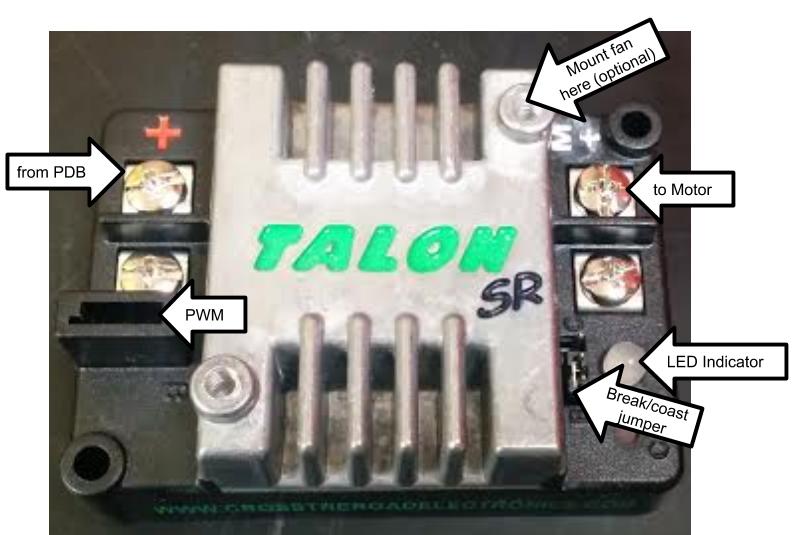Talon

The talon is interchangeable with the jaguar. It has a peak output of 100A and 60A continuous current. There are mounting holes for an optional 40mm fan. The LED on the talon is a status indicator.

➠ Sample Code
#include "WPILib.h"
class RobotDemo : public SampleRobot {
Talon talon;
Joystick stick;
public:
RobotDemo(void):
talon(1),
stick(1)
{
}
void OperatorControl() {
if(stick.GetRawButton(1)) {
talon.Set(1.0);
}
else if(stick.GetRawButton(2))
{
talon.Set(-1.0);
}
else {
talon.Set(0);
}
}
};
START_ROBOT_CLASS(RobotDemo);
➠ Explanation
Talon talon;
Declare talon motor controller as talon; declared between class : SampleRobot and public : RobotDemo.
talon(1),
Initialize talon motor controller as connected to port #1 in the Digital Sidecar (PWM Out); initialized between public : RobotDemo and the braces({ }). If it is not the last object initialized, it needs a comma like a list. If it is the last object initialized, no punctuation; no comma, no semicolon, no period, etc. or you will get an error.
void OperatorControl() {
if(stick.GetRawButton(1)) {
talon.Set(1.0);
}
else if(stick.GetRawButton(2)) {
talon.Set(-1.0);
}
else {
talon.Set(0);
}
}
Joystick class is gone into depth in an earlier section of this manual. Motor controllers are put into results of conditions because a free-spinning motor is a waste of power and there is no control over the motor (which is why it is a motor controller) The .Set method of the class accepts a float between -1.0 to 1.0 as a parameter which sets the speed of the motor to that float. 1.0 is full speed “forward”, -1.0 is full speed “backward.” The motor when initialized begins at .Set(0). The else talon.Set(0) is to stop the motor; unless the motor controller is set to 0, the motor remains at the last .Set() value.